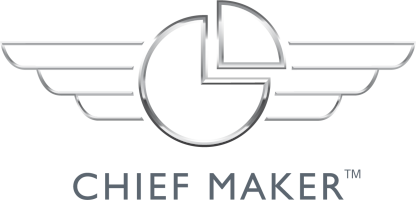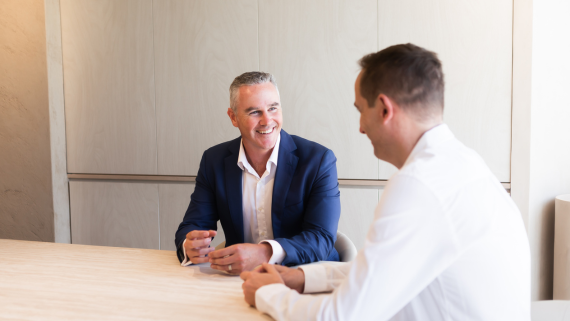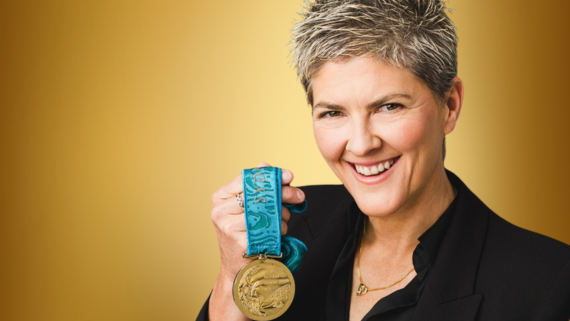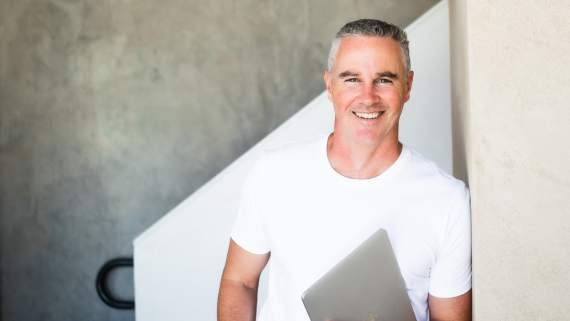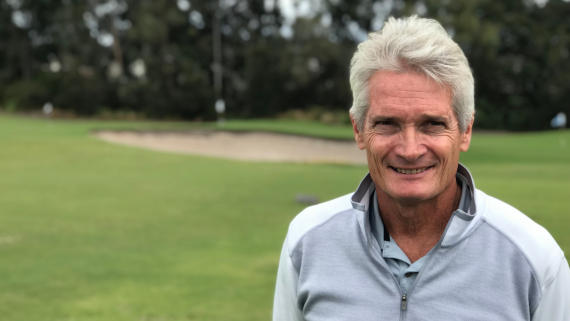
Subscribe to Spotify![]()
In this Best of Series episode of The Inner Chief podcast, we feature Golf master Coach, Steve Bann, on working with the world’s best golfers, turning practice into confidence, and the improvement lifecycle.
Steve is a partner in BannLynchMcDade, a coaching team that has coached their students to 29 USPGA Tour wins and multiple international amateur and professional titles.
After turning professional in 1979, Steve played on the Australian PGA Tour from 1981 to 1996.
However, since 1996, Steve has travelled the world, coaching at over 40 Majors and five Presidents' Cups. His students have included Stuart Appleby, Robert Allenby, Ian Baker-Finch, Greg Norman, Vijay Singh, and Adam Scott.
Steve has been described by his clients as the most knowledgeable coach in the world. He is also the author of Simply Golf: Back to Basics.
In this episode we talk about:
✅ Why a lot of coaches focus on fixing technique, which leads to a reactive cycle, and often has the opposite effect
✅ How the improvement life cycle of technical, physical, mental and strategic changes, is a far greater process to undertake
✅ The 6,500 skills the professionals have to learn to master golf and how this translates to the business world, and
✅ The 4-step routine to gaining confidence.
Connecting with Steve Bann
You can reach Steve on his Coaching website or YouTube.
Books and resources
- Simply Golf: Back to Basics – by Steve Bann
- Practical Golf – by John Jacobs
“We see Tiger Woods get angry and throw clubs, but when he does something he’s done a million times, like hole a 6-foot putt, he gets super excited and dances across the green pumping his fist. Why? He's emotionally anchoring that success.”
On early career lessons
- The one thing that we all had in common was we all loved to compete. We loved to play the game and loved to compete. We didn't have any technology. There were no high-speed video cameras, and force plates, and launch monitors…but we all found a way to play.
- The conditions of the golf courses were terrible. Some of them were dry, some of them were sloppy, the grain was so strong that the ball would actually go against gravity. You just had to figure out your way of being able to score.
- Along the way, we learnt to deal with adversity. We learnt to find ways to get on with doing what we were trying to do, trying to do better, and were all pushing at each other, at a competitive level, and yet, we were all supporting each other. It was like a team.
On fixing technique
- I think people focus on technique so much, because it's tangible. You can see it. You hit a bad shot, you can say it was because you did this. So you reason that if you then work on fixing that, then you won't hit bad shots anymore. But there's always something to work on: I'm too flat, I'm too upright, I'm swaying, I'm sliding, I'm spinning out. There's always something.
- An interesting stat is that there's more books written on golf technique than every other sport in the world combined, and yet, golfers still aren't improving. So, I think by focusing on technique you fall into that trap called a reactive cycle. When something goes wrong, you're always trying to fix it. The reactive cycle is always trying not to do something, and that's not a good cycle to get on. In golfing terms, I hit a slice, I'm trying not to hit a slice. Instead, how do you fix a slice? You teach somebody to hook the ball. Forget the slice.
- That was a great, very early lesson and experience for me to know that it's what works for you, and as long as you abide by the laws of force of motion and you're consistent with it, you can become a player.
- I've heard Jim Furyk’s father, Mike, say, “I knew it didn't look right, but I didn't know enough about technique to try and fix anything, so I just let him go.” To me, he's a great coach. He had him hitting shots, learning to play, he didn't interfere and say, “You won't be able to play well until you do these things right.” There's another world champion golfer for a long period of time who's done it his own way.
On the improvement cycle model
- In golf, we bring it down to the technical, physical, tactical, and mental side, and if we use the improvement cycle model, and we run one month improvement cycles, if you've got that going technically, physically, mentally, and strategically every month, times 12 every year, you have to be making progress.
- The assessment's the important part to get right, because if we make an assessment and we come up with the incorrect conclusion, then we set ourselves on a pathway, which is going to be potentially a waste of time. But at least, at the end of that, if we reassess, we can then go, “Okay, that wasn't the right step forward.” Make an assessment, set a goal, which has to be realistic, based on time and capability. There's no point setting goals that somebody probably isn't ready for and not capable of doing. Put activities in place to achieve that goal, come back and reassess.
- Our job, in the assessment, is to find out why the swing has changed, because the only way you can fix it is by identifying the real bottleneck, the real constraint. If you go and fix it with some theory of a new swing method or technology when the whole reason that your swing's changed is because you're tight in the back, because of some activity you're doing, then that is not going to help, and that's reactive.
On steps to gain confidence in any skill
- We have to talk about confidence in a language that people understand and they get. We like to call it, knowing. When you know something, you're confident. Most people are performing confidently every day. Now, what I mean by that is when you fail, you're actually demonstrating confidence, because the process of getting there is exactly the same. You've based it on a past experience that you knew was going to happen, you couldn't get your head out of that space and it happened again.
- I like to say that negative confidence works 100% of the time, and the unfairness of golfers' positive confidence, works between 50 and 70%. The confidence is knowing, so we try to prepare to know, and the only way you can prepare to know, is the difference between optimism and faith. They're closely linked. It’s self-advocacy. We need self-belief to drive the confidence, but confidence is knowing, and you can't know something until you've actually experienced it.
- I say that technique is only 30% of confidence. You get your technique perfect and at best, you'll only be 30% confident.
- The next 30% is skills. In golf, there's 11 shot categories; driver, fairway, woods, long irons, mid irons, short irons, chipping, pitching, bunkers, and short, middle, long putts. There's 11 categories. There's about nine skills in each of those categories; high, low, normal, draw, fade, and straight. In total, there's about 6500 skills and you need to learn to deal with all of these different skills and your reaction to the situations. So, “If that happens, I do this, because last time it happened, I learnt from it.” That's what knowing is. So by turning the technique into the skills through practice, that gives us 60% of confidence.
- Next is testing. You've got to test something, you've got to put it into a test situation where you challenge it, and you test it, and you see whether it actually works.
- The biggest intimidation in golf is the boundaries. It's never the target. It is what is around the target that is the intimidation; the bunkers, the water, the outer bounds fence, the trees. To start with, we have to visualise what we'll do, and anticipate it will happen and this is what I'm going to do, but then, hopefully, when it does happen and then you do succeed then you will have some success, and that's what you'll be able to draw upon. So you recall that practice success and you choose to run that programme rather than the last. That's an important thing. You have to choose to run that programme. Now we're getting close to knowing and you're about 90% confident.
- The last 10% is when you're right at the coalface, and you're in competition, and you've got a 100 metre shot, and you're saying to yourself, “This is just like the one I did three in a row last night. I know I can do this.” That's what confidence is. And choosing to remember that you did this three times in a row, and you go through your full routine.
- The four step routine is:
- Decide on the shot – you do an analysis of distance, wind etc.
- Prepare for the shot – have your practice swings, you're visualising, theorising, you're preparing for the shot. Hopefully, you're repeating a swing that you know has succeeded in the past. This is just like that shot.
- Set up the routine – grip, stance, ball, position, posture, and aim. Now you're setting up for that shot that you've decided on playing, prepared to play, set up to play.
- Execute the routine – Hit the ball. This is the easiest thing to do and the hardest thing to do at the same time. The reason it is the easiest thing to do is because there is no further thought required. The reason it is the hardest thing to do is because there is no further thought required. You've got to get out of your way and trust and commit, and only you know, on every individual shot, whether you actually do that.
On applying skills improvement to business
- It's knowing. How do we create situations? First of all we have to imagine it and decide what we're going to do when it happens, but then prepare for it as much as possible, and have all of our contingencies in place. Then we just keep growing with that, but I think the most vital step is the principles behind anchoring.
- Everything that stays in our long-term memory is, because there was an emotional shift attached to it. We might remember our first bike, our 12th birthday party, and all of those types of things. We don't know what we were doing the day before or the day after.
- Sometimes, we're too hard on ourselves and there's more emotion attached to our failures than there is to our successes. Eventually, in our memory bank, in that long-term memory bank, there's an imbalance. There's way more successes, but because we were prepared for that, that was going to happen anyway, we don't actually acknowledge it and anchor it as much as we should.
- I think Tiger Woods is brilliant at this. We see Tiger get angry and throw clubs, and curse, do all of those things, but we've seen, when he does something that only Tiger Woods does, gets super excited, and pumped up, and dance across the green pumping his fist. I said, “Tiger, you just holed a six foot putt. You've done that a million times.” What's he doing? He's making sure that the emotional anchoring of that success outweighs the human anchor.
- I call it human, because we're human beings. Of course, you've got to get angry. You've got to get frustrated, because that's what drives you to get better, but if that's all we can remember, because that's the only thing we have emotional shifts attached to, eventually, you just can't see yourself succeeding at anything.
- What we want is an attitude where our brain says, “I can't wait. I've been hoping to get out there tomorrow and work on a new skill.”
On what he learnt from a mentor
- I was appointed head coach of the Victorian Institute of Sport and Dr. Frank Pyke, who passed away in 2011 from motor and neuron disease, was the CEO of the Institute of Sport. And I remember right at the very start he got all of the coaches, all the sports science and all the management together. And he got everybody in the room together and said we've got a couple of simple rules that if we abide by, we will succeed as an organisation. He said number one is to start every day with the question of what is the best thing you can do today to help the athlete.
- Number two, surround yourself with people that are smarter than you and leave your egos at home. It's about learning and opening yourself up to being able to specialise in what you do and not trying to be everything for everybody and learn to delegate. There's somebody a whole lot smarter than you who can do that, so why don't you let them do that so you can be even better at what you do.
- Everyone has a role and everyone has a need to feel important. And there's nothing wrong with a little bit of encouragement; if someone else gets a few of the accolades along the way, then all well and good.
Final message of wisdom and hope for future leaders
- Learn to find out what works and stop doing all the filler stuff around it that we think we have to do, because that's what's been done in the past. Why are we doing this stuff? How is it actually helping? So just filter out all the stuff that doesn't really help us get where we want to go.
- Reframe learning to love what you do. The moment you stop loving what you do, I think that's when things start to unravel, and then we do start to react, and then motivation for doing things becomes, probably not the right motivation. If we love what we do and then we can analyse what we do and realise that so much of this stuff is just wasted time and effort and energy, I think they'll have a lot more fun.
Deal hope,
Greg
MINI-MBA IN LEADING HIGH PERFORMANCE TEAMS
Limited spaces per intake
